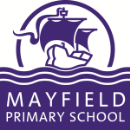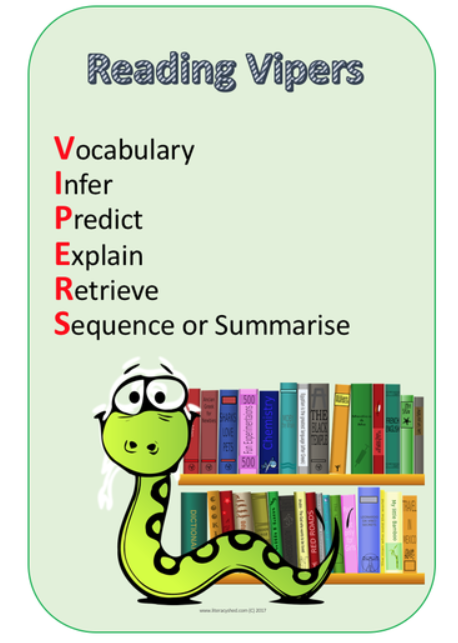Our Approach to English
Our Approach to Reading
Our Approach to Phonics
Our Approach to Writing
Our Approach to Grammar, Punctuation and Spelling
Dyslexia
Supporting Materials
Our Approach to English
Fostering a love for reading and writing and celebrating creativity and independence underpin the teaching of English at Mayfield.
Our Approach to Reading
Mayfield’s Reading Charter
Every child at Mayfield has the opportunity to:
- Read for pleasure.
- Choose from a wide range of books, and help decide which books are bought for our school.
- Receive advice and recommendations from a librarian, well-read staff and peers.
- Own their own book.
- Be read aloud to.
- Have a choice of what they read, alongside selected texts.
- See an author event at least once.
- Watch a story come alive through dramatisation at least once a year.
- Read to an adult or peer at least once a week.
- See themselves reflected in a book.
At Mayfield we strive to empower children to develop the confidence to read for pleasure. Reading for pleasure is promoted throughout the school. We are fortunate enough to have a well-stocked and spacious library at the heart of the school which is run by our amazing librarian Mrs Le Vann. Families are welcome to share books in the library after school on Tuesdays and Thursdays until 4.30pm. Every class also has special bookshelves in their classrooms to help them engage with the books they enjoy. Each class explores a range of authors and genres through class books shared by teachers in story time as well as guided reading and writing. We encourage children to recommend books to one another through reading sessions, interactive displays and assemblies. From Y1 all children have a book buddy from another year group to share their reading and writing with.
We love celebrating World Book Day every year, and also celebrate National Story Telling Week and National Poetry Day. We offer virtual and live author events throughout the year to inspire our pupils as readers and writers.
Our English and SEN teams, alongside class teachers, offer support and intervention for children who may need additional help to allow them to feel confident and engaged with reading. This may include the opportunity to read 1:1 with grown-ups. Please visit the dyslexia area of our website for more detailed information: Dyslexia
For children to become confident and enthusiastic readers, we also need to take reading beyond school. We value your support at home: listening to, reading with and discussing books with your child is much appreciated. Please find our lists of recommended reads below!
To teach reading and comprehension we use a range of quality texts and activities to engage and inspire, as well as to develop children’s skills as readers and writers. To support the teaching and learning of the reading content domains laid out in the National Curriculum, we have adopted the reading VIPERS from “The Literacy Shed”. VIPERS covers the key comprehension skills that are taught in both Key Stage 1 and 2. They enrich reading skills and learning across the curriculum. For examples of the types of VIPERS questions which are helpful to ask children when they are practicing comprehension, please click on the links below.
Our Approach to Phonics
At Mayfield, phonics is taught until July 2022 through Visual Phonics: a specially adapted version of the Letters and Sounds scheme which incorporates BSL (British Sign Language) supported phonics. Phonics is taught daily in Reception and KS1 through song, stories and activities indoors and outdoors. In KS2, special provisions are in place to support those children who require consolidation of phonics in order to access their learning.
From September 2022 we be using Essential Letters and Sounds (ELS)
For more information about phonics at Mayfield, please visit the phonics area of our website: Phonics
top
Our Approach to Writing
At Mayfield, we strive to instill a love for writing and language in our pupils.
Our writing planning originates from a range of quality literature and model texts. These are selected through age appropriate recommended reads, topic book boxes or consultation with our reading specialist teacher. During their time at Mayfield, children will be exposed to a wide range of poetry, fiction and non-fiction.
Children first explore these texts as readers by analysing the intended audience, purpose and language of a piece of writing. This exploration can take many forms, including drama, art and immersive experiences. Children next explore a text as a writer – practicing their own examples of language and grammar features and participating in shared writing with their teacher and peers. Finally, children have the opportunity to write, edit and publish their own version or versions.
We also offer opportunities for children to write about subjects that matter to them, while celebrating aspiration and a broad vocabulary. Children’s creativity is nurtured, and children love playing with language and free creative writing.
We ensure that children have the chance to write in subjects across the curriculum and pupils write every day, producing at least one longer write per week.
Offering a purpose for writing and platforms to share it is important for motivating children to write and teaching them the value of writing in the real world. We celebrate children’s work through shared readings and performances in class, displays, learning journals, class books, writing for real purposes such as postcards and letters and publishing work on our new inspiring authors’ blog: Authors’ Blog.
We aim to inspire children to enjoy writing through experiences, imaginative play and planning. We offer this this through the use of high quality literature, films and pictures to stimulate imagination, as well as learning outdoors and exciting trips related to topic learning.
Our Approach to Handwriting
At Mayfield, handwriting is introduced in reception and taught explicitly until year 3. From year 4 to year 6, handwriting interventions are tailored around the needs of individual children or classes. Handwriting is taught through phonics and letter families. Joining and writing with pens are introduced in year 2, based on Sassoon script. Handwriting is celebrated by head teacher and team leader awards in weekly assemblies.
Our Approach to Grammar, Punctuation and Spelling (GPS)
At Mayfield we teach GPS through reading and writing, and endeavour to give context to GPS concepts. Games and activities are also an important part of GPS learning at Mayfield!
GPS may be taught through short lesson starters at the beginning of each writing lesson, or in discrete weekly lessons. Concepts are further embedded and applied in children’s writing.
We use a range of methods to practise and investigate spellings and spelling rules and patterns. In KS2 we capitalise on children’s phonic learning to support their spellings.
Spelling Shed
All children have a Spelling Shed account which can be used at school and at home to play games and practise spellings from Key Stage 1 and Key Stage 2 spelling lists.
From September 2022 we will use Spelling Shed as the main resource for teaching spelling in years 1 to 6.
top
Dyslexia
What is Dyslexia?
Dyslexia is a common specific learning difficulty which can cause problems with reading, writing and spelling.
It is likely to be present at birth and to be lifelong in its effects.
The dyslexic brain processes written and spoken information differently. Sometimes the information is forgotten, jumbled up or bits are missing.
It makes learning to read and write much harder and can also cause difficulty with organisation, maths and memory. Children with dyslexia need to discover self belief and determination to succeed to give them the mental strength to get through school. Everybody is different.
Facts about Dyslexia:
- It can be hereditary – 1 in 10 people have dyslexia
- More boys than girls have dyslexia
- Can experience difficulties with multi-tasking
- Affects people across intelligence range
- Differing degrees of severity
- 40% also have difficulties with maths
- Up to 50% suffer from visual stress
- Difficulties persist into adulthood
- All have strengths and difficulties
- The learning difficulty is not a result of lack of motivation but can lead to low self esteem if not recognised and diagnosed
Strengths of Dyslexics:
- Seeing the bigger picture
- Thinking outside the box
- Intuitive problem solving
- Creative
- Lateral thinking
- Sociability
- Visual thinking
- Abilility to think in 3D – great special awareness
What to do if you think your child is dyslexic
Signs of dyslexia may become apparent when a child begins to focus more on learning how to read and write. A person with dyslexia may read and write very slowly, often confuse the order of letters in words, put letters the wrong way round and have poor or inconsistent spelling. Processing of information can be affected so that dyslexics often understand verbal instructions better then information that is written down. Planning and organisation and anything that requires the use of short term memory can also be a struggle. However, every child presents differently
Speak to your child’s teacher. They will be able to talk with you and address any concerns that you may have. Each class is expected to be dyslexia friendly, which in turn benefits all learners in the classroom. There are resources that the teacher can try such as coloured overlays and other reading aids.
It is very useful for your child’s teacher to know if dyslexia runs in the family.
Make sure your child has regular eye tests and discuss any concerns with the optician with regards to dyslexia and visual stress.
Dyslexia Support at Mayfield:
Mayfield wishes to take the fear out of school for children with dyslexia; many of whom, if not supported, can feel alienated and disorientated with an increased risk of becoming disinterested in education. Mayfield ensures teaching is multi-sensory; something that benefits ALL children, not just those with dyslexia.
School library – the school library has a dedicated ‘dyslexia’ section with books chosen specifically for their dyslexic friendly style.
Reading teacher – Rachel Barnes currently supports children with literacy difficulties and specifically works with children who need extra support with their reading fluency.
Dyslexia can be seen as an advantage, some even say it’s a super power!
Some famous dyslexics include: Steve Jobs, Albert Einstein, Walt Disney, Agatha Christie, Jamie Oliver, Keira Knightley, Lewis Hamilton, Orlando Bloom, Dom Wood, Leonardo Da Vinci, John F Kennedy, GW Bush, G Washington, John Lennon, Pablo Picasso, Liz Pichon and Richard Branson
Recommended websites for more information:
https://www.bdadyslexia.org.uk/
Recommended books:
https://www.barringtonstoke.co.uk/
https://www.lovereading4kids.co.uk/genre/dys/Super-readable-Dyslexia-friendly.html
Toe by Toe reading manual– Keda Cowling
Tom Gates – Liz Pichon
Dog Man – Dav Pilkey
Danger is Everywhere – David O’Doherty
Diary of a Wimpy Kid – Jeffrey Kinney
Seriously Silly Stories – Orchard Books
Captain Pug – Laura James
The Storey Treehouse series – Andy Griffiths and Terry Denton
Zita – Ben Hatke
Dixie O’Day – Shirley Hughes and Clara Vulliamy
Titchy Witch – Rose Impey and Katherine McEwan
Supporting materials
For advice and activities to help support your child with reading at home, please visit the following website: Oxford Owl
A great article from the Oxford University Press about why reading with your child is so important with lots of good hints and tips to help you OUP Books Beyond Bedtime Article
Please find below Visual Phonics Resources for you to download
Infant Alphabet Deskcard Infant Deskcard Junior Alphabet Deskcard Junior Deskcard
Reading lists for Foundation Stage, KS1 and KS2
Reception Reading List
Y1 Reading List
Y2 Reading List
Y3 Reading List
Y4 Reading List
Y5 Reading List
Y6 Reading List

